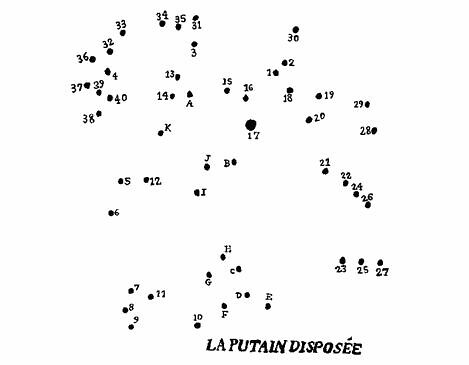An article by Hannah Neumann for The Fed on erotic connect the dots. She mentions Benjamin Stout’s lithographs for The Lustful Turk and Les Flagelants Féminins. I was unable to find more info on Stout.
- “Connect-the-dots (contemporarily known as ‘cunny constellations’ or ‘points d’amour’) were conceived as a method of bypassing obscenity laws in eighteenth-century Britain. Although they were commercially successful, the belief that their distributors were immune to arrest and seizure by the police was quickly proven false. As William Lazenby, a contemporary publisher of illegal erotica recalled, “We hadn’t reckoned on the coppers’ numeric acumen. T’was not long ‘fore we’d nary a tuppence earn with the rise in confiscations.” By the mid-1880s, erotic connect-the-dots had been abandoned in favor of less cryptic illustrations.” —Hannah Neumann











